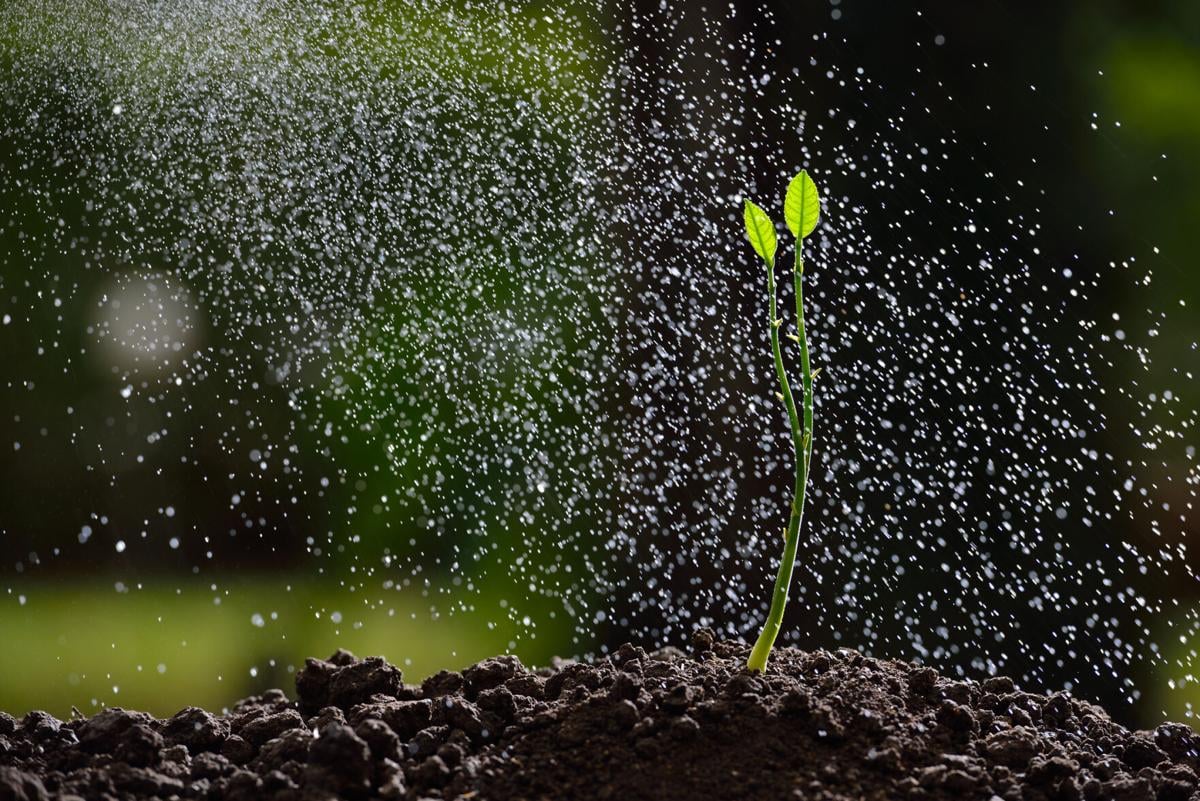As this monsoon is demonstrating, our rainfall in Tucson is very variable. This makes it a challenge for gardeners to figure out how much to water their plants throughout the year. This week, we’re focusing on watering tips and tricks to help you use water most efficiently.
Plants' watering needs will vary depending on the season. Your soil also matters, as do the microclimates in your yard and the plants you have. Tucson has two seasons when we can expect precipitation: winter and the wet summer (or monsoon).
As much as 70% of residential water use is used for landscaping, according to the Arizona Department of Water Resources. The water we use is fully treated potable water – not the best use of resources. If you want to be smart about your water use, here are some basics of watering in our variable desert. Please also check out the two-page graphic in the Arizona Daily Star’s Sunday Home+Life section. You can find a link to the digital version here.
General tips:
- The hottest and driest part of the year is our dry summer, roughly May and June. This is when plant water demand will be the highest. However, the length of this period varies greatly depending on the start and vigor of our monsoon.
- The microclimates in your yard will influence how much water your plants use. Plants will lose more water in sunny and/or windy areas than in shady, sheltered areas.
- Plants with similar water needs should be planted together, and ideally be on the same irrigation circuit. For example, don’t put cacti and citrus trees near each other – one of them will die due to their vastly different water needs. Similarly, if you're putting in an irrigation system from scratch, plan for separate circuits for trees, large shrubs and smaller plants.
- The more organic matter your soil has, the more moisture it will hold. Mulch will also help keep soil most and reduce watering frequency.
- In our climate, drip irrigation is the most efficient way to deliver water to plants. A programmable drip irrigation system allows you to adjust the frequency of waterings with very little effort on your part.
- Alternate sources of water, such as rainwater harvesting, greywater harvesting, and (if possible) use of reclaimed water can help you water your plants much more efficiently and cut down on our water waste.
- Be careful not to overwater your plants. This is difficult in our summer, but can still happen, and the symptoms are similar to underwatering (limp leaves). Be particularly careful about your containers, and make sure they have open drainage holes.
- When the thermometer reaches over 100 and the sun is high, don’t be surprised if your smaller containers need daily watering – or even twice daily. To reduce their watering needs, use pots that are at least 24 inches round and deep, and mulch your pots.
- I highly recommend getting inexpensive outdoor thermometers with multiple sensors that you can hang in different parts of your yard. These will let you know the high and low temperatures in your yard and help you figure out some details about your yard’s microclimates.
Links to helpful resources:
- For a thorough guide to water needs for every kind of plant you can imagine, take a look at Brad Lancaster’s Water Requirement Calculations for Tucson.
- For a worksheet on figuring out your soil type and another resource on how long to water, check out Landscape Watering Guidelines from Tucson Water.
- Check out the Landscape Watering by the Numbers booklet.
- For a primer on drip irrigation, see Drip Irrigation: The Basics from the University of Arizona’s Extension office.
- For a monthly watering schedule, check out this resource from Arizona Municipal Water Users Association. You can sign up for month-specific guidelines by text.
- Here's an interactive watering guide from Water Use It Wisely.
- Here are some tips on correct watering, salt buildup and how to prevent it, and signs of overwatering.
- Sign up for a free water efficiency audit from the City of Tucson’s Zanjero program.





